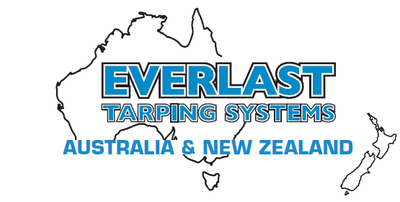Not all truck tarping systems are created equal. With regulations on load covering becoming increasingly stringent with large fines for non-compliance, the decision on what sheeting system to add to your tipper is an important one.
Twin Cable Bow Systems

Twin cable systems have been on the market for many years. They have two independent cables on either side of the body that join at the winch.
Advantages:
- Only having to replace one cable if one side of the system breaks.
Disadvantages:
- If a bow on either side of the system gets jammed with debris, it will cause the system to stop completely.
Rating: 2/10
Roll Over (Side to Side) Systems

Roll Over systems, rather than retracting from front to back, go from one side of the tipper body to the other. A steel arch is typically attached (by welding or bolts) to each end of the tipper body to allow free movement of the tarpaulin.
Advantages
- Most systems can be operated from switches located in the cab.
Disadvantages
- The tarpaulin gathers on one side of the bin making it difficult to fill from both sides which can be problematic in tight areas.
Rating: 6/10
Automatic Arm Systems
Automatic Arm Systems have two arms that sit outside the width of the tipper body and rotate to move the sheet from front to rear.
Advantages
- Ideal for grab applications that require a bucket to be housed at the end of the body.
Disadvantages
- The arms can sit up to 4 inches of the side of the body and can easily be hit by a machine or trees etc in tight moving situations.
Rating: 5/10
Single Cable Systems

Single cable systems retract from front to back and have one continuous cable that attaches to each bow in the system.
Advantages
- The continuous single cable minimises bow jamming.
- Tarp extends over the side of the body giving a near water tight seal.
Disadvantages
- None.
Rating: 10/10
In summary, for most applications the single cable system is superior to most other truck tarping systems in the marketplace.

